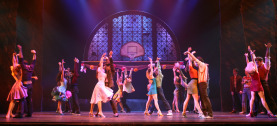With arts groups struggling all around us, an article in yesterday’s New York Times, “As Detroit Struggles, Foundations Adjust,” really caught my eye. It contained a warning for arts organizations and arts-lovers. Describing how their reduced resources made them change the way they operate, foundation officials said they were “being forced to pick winners and losers.” In some cases, the foundations were forcing mergers. As a condition of aid to “Women Arise,” for example, the Hudson-Webber Foundation merged it with Matrix Human Services.
Then comes these key paragraphs:
Thus, the Hudson-Webber chief executive, David O. Egner, is asking himself whether Detroit needs both a world-class symphony and its Michigan Opera Theatre, and, if so, whether they could share an orchestra.
“These are the kinds of questions we need to be asking,” Mr. Egner said.
Hudson-Webber is a big foundation in Detroit. In 2007, the most recent figures available on its website, net assets totalled $174 million and it gave away nearly $8 million in grants. Of that, it donated $15,000 in operating support to the opera and $20,000 in operating support to the symphony, plus $200,000 of a three-year grant to support the symphony’s “summer initiative.”
But…
[Read more…] about Should foundations pick winners and losers in the arts?



